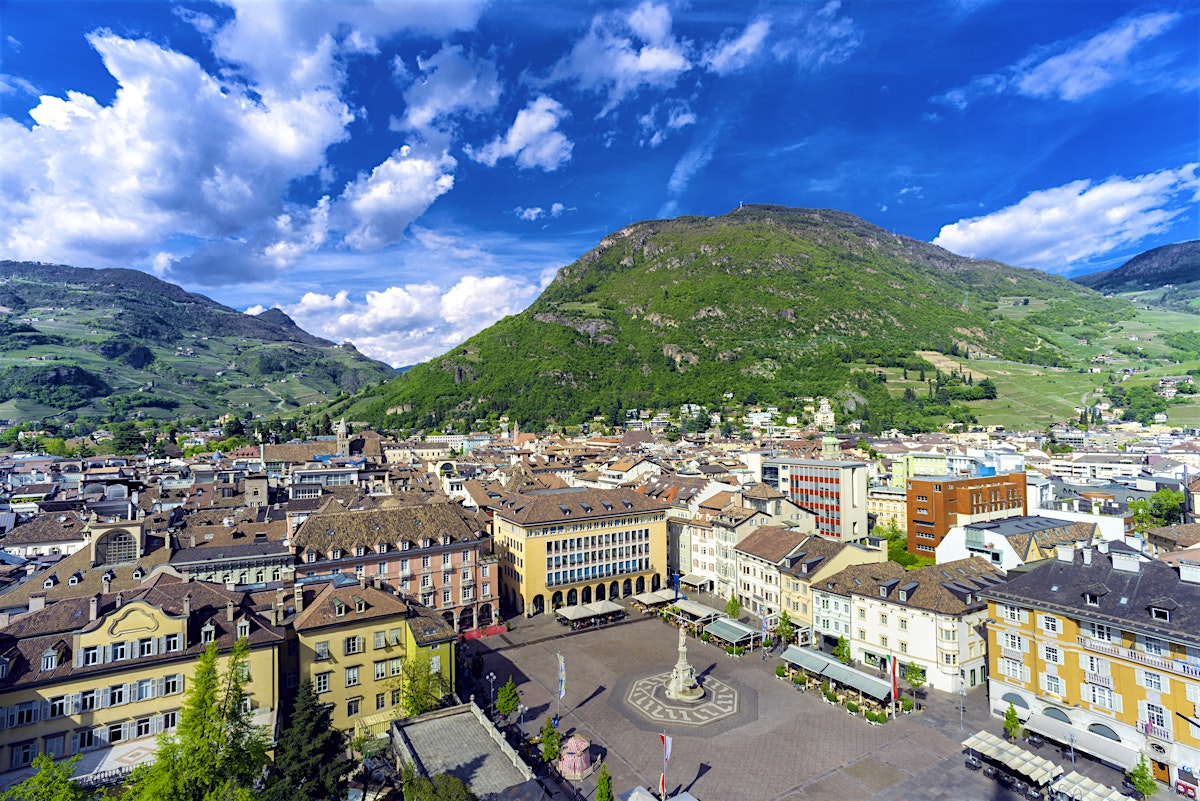 ALTO ADIGE (SOUTH TYROL)
ALTO ADIGE (SOUTH TYROL)
Officially, the Austrian border runs through the Brenner Pass, but it may seem like, that the actual boundary is slightly to the south, near Bolzano, where the villages have a typical Tyrolean appearance and German is spoken everywhere. Despite repeated 1946 a year of promises of autonomy, Alto Adige (South Tyrol) remains an ordinary province of Italy, although the provincial administration receives large sums from successive central governments, to be used to improve living conditions and alleviate separatist sentiments among its German-speaking residents. Unemployment is low here compared to the national average, and per capita income high. However, the government aid did not improve relations between the German majority and the right-wing MSI movement. (Movimento Sociale Italianó), whose representatives considered such reforms to be anti-Italian, how to increase the number of Germans in high positions in the administration. Msi Movement organizes rallies in Bolzano and in 1987 of the year he managed to elect his first representative to the local authorities, a lawyer, who called Mussolini "a great man". Since then, activists of this movement have been encouraging neo-fascist sympathizers to move to alto Adige., so that the number of them can increase locally.
MSI's opponent is SVP (Sud-Tiroler Volkspartei), which is divided into secession enthusiasts and supporters of a more favorable agreement with the Italian state. Sympathizers of the more radical faction have been accused by the press of being involved in organizing a recent series of bombings., which prompted President Cossiga to change the place of his usual holiday rest.
Traveling around the province is not so dangerous, as may follow from the above remarks, and in relation to foreigners, signs of hostility are very rare. On the contrary, the atmosphere in large cities is very calm, not to mention the high valleys. Although Bolzano is surrounded by mountains, the true charm of the Dolomites can be discovered by going either to the high mountains to the east from here in the direction of Cortina d'Ampezzo, or towards the Ortles band, located not far from the Swiss Alps and Austrian glaciers.
Bolzano (Bozen)
The main city of Alto Adige, BOLZANO, lies at the crossroads of the rivers Talvera (Talfer) and Isarco (Eisack), near the southern tip of the province. This is the market town of the Adige Valley, lying at the crossroads of trade routes, went through various turns of fate. In the Middle Ages, Bolzano's fate depended on the current situation in the struggle for power over the province between the Dukes of Tyrol and the Bishops of Trento.. In the fourteenth century, the city passed into the hands of the Habsburgs, then, at the turn of the eighteenth and nineteenth centuries, the Bavarians took control of it, resisted by Tyrolean patriot and military leader Andreas Hofer. Run by him in 1809 The struggle to keep Tyrol in Austrian rule was only a partial success., for in the same year the Austrian Emperor ceded Tyrol to the Kingdom of Italy under Napoleon's rule. After the fall of Napoleon, Bolzano was returned to Austria, to which it belonged until World War I. Since the end of the war, the city has been part of Italy.
Bolzano can already be included in the German-speaking cultural zone in Europe on the basis of appearance. From Piazza dell'Erbe (Obst Platz), where a fruit and vegetable market takes place every day, the dark streets of the Old Town diverge. On Via dei Portici (Laubenstrasse) bay windows hang over nineteenth-century arcades, in the old streets there are specializing in speck, gulasch and knódel restaurants and bakeries selling tasty sachertorte and dark bread. Despite the popularity of Bolzano as a center of summer and winter tourism, the local calm rhythm of life makes, that the city is not only a good starting point for trips to the mountains, but also a pleasant place to rest. Café gardens are suitable for this purpose, and when visiting them you must try the local wine. Bolzano, as part of a wine-making area that has flourished since Roman times, located at the beginning of Strada di Vino (Sudtiroler Weinstrasse), which runs further south to Trento and is particularly well known for Chardonnay.